Trout Unlimited is only as strong as its membership base. Without our 150,000 plus volunteers over the nation, and over 10,000 volunteers in Colorado, we wouldn't be able accomplish what we do.
In order to instill a passion for conservation into future leaders, CTU works to foster the next generation of conservationists through our Youth Programs. Starting with the Colorado TU Youth Camp, participants learn the skills and knowledge to become leaders in their high school or college clubs. From their leadership roles in college, they have the skills to become the leaders of tomorrow- not just in TU but their chosen professional fields.
Myles Brown- 2012 Camp Alumni
“What I thought the camp would be about was a strict camp with a really tight schedule and very strict instructors. But the camp was totally the opposite. All of the counselors were cool, willing to teach and give us time to learn about conserving our ponds, lakes rivers and stream. Most of all, getting better at fly fishing! Now fishing is a part of me with lots of awareness and cautions. I learned that the sport of fly fishing attracts many people coming from places all over the world. They come from many different backgrounds but on the river, we are all the same.”
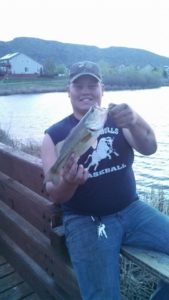 The CTU camp that I was lucky to attend in my freshman summer going into high school was one of the best experiences that I have ever had. I really do think it was one of my best fishing experiences ever. I was able to share a common interest with everyone that I was fortunate to meet. I was able to share not only the amazing hobby of fishing but to help out and better the life of not only me but the fish and future fishermen and women. While I was there I shared many experiences and moments that I will treasure through my whole life. One moment that I remember clear as day was the chance to be one with the water and look to what fish refer to as, food. I was able to clearly see and extract many bugs in a stream that was abundant of fish. It was also a very humbling experience because I was able to see how we as a youth group could really impact the future of fishing and to ensure the maintenance to keep our fishing in Colorado going strong. I am very grateful of what I was able to learn in the short amount of time I was there. I would have been okay if it was all summer but I still am very grateful for the chance to attend an amazing camp full of amazing people.
The CTU camp that I was lucky to attend in my freshman summer going into high school was one of the best experiences that I have ever had. I really do think it was one of my best fishing experiences ever. I was able to share a common interest with everyone that I was fortunate to meet. I was able to share not only the amazing hobby of fishing but to help out and better the life of not only me but the fish and future fishermen and women. While I was there I shared many experiences and moments that I will treasure through my whole life. One moment that I remember clear as day was the chance to be one with the water and look to what fish refer to as, food. I was able to clearly see and extract many bugs in a stream that was abundant of fish. It was also a very humbling experience because I was able to see how we as a youth group could really impact the future of fishing and to ensure the maintenance to keep our fishing in Colorado going strong. I am very grateful of what I was able to learn in the short amount of time I was there. I would have been okay if it was all summer but I still am very grateful for the chance to attend an amazing camp full of amazing people.
Now I am a senior at Chatfield Senior High and I just finished my fourth year of football and am in the middle of my senior baseball season. Even though I am jam packed with the sports I love to play I am still able to squeeze in time for what I love the best, and that is to fish. I enjoy all types of fishing but nothing beats that with a fly and a fly rod. I make sure that the trips that I take are around a place that I can get my line wet. Next year I am attending Montana State University Northern in Havre, Montana. I will be getting my major in Diesel Technology and Field Maintenance. I look forward not only to the awesome school but being close to one of the best places to fish in North America. I am excited to further my career and lead a good life but will never leave my passion of fishing behind.
Tyler Bowman- CU Club Alumni
"In today’s world, fisheries conservation programs can be vast and vague. It is important that conservation organizations like Trout Unlimited focus their efforts intelligently and appropriately. Programs like the CTU Youth Camp are well worth the time, money and commitment. The key to future conservation efforts is teaching today’s youth the importance of conservation and stewardship and there is no better program than the CTU Youth Camp to accomplish these goals. Take an interest in the CTU Youth Camp today; our fisheries and youth depend on it."
The Colorado Trout Unlimited Youth Camp may be one of the foremost building blocks to instilling the principles and values of ethics, conservation and good stewardship into the youth of Colorado and the West. The CTU camp, its leaders and volunteers do an amazing job to educate our youth about the values of stream conservation, catch and release trout fishing and the importance of understanding entomology and its effect on our trout streams.
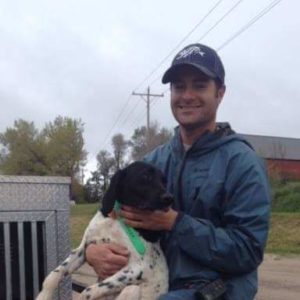 Many of the leaders and volunteers involved in the CTU Youth Camp have originated from the University of Colorado fly fishing club. The CU Fly Fishing Club is a wonderful fly fishing group that is part of the University of Colorado club sports program. The club focuses on teaching the art of fly fishing, fly casting and fly tying to all experience levels and is a place where anglers can share fishing information and form life long friendships.
Many of the leaders and volunteers involved in the CTU Youth Camp have originated from the University of Colorado fly fishing club. The CU Fly Fishing Club is a wonderful fly fishing group that is part of the University of Colorado club sports program. The club focuses on teaching the art of fly fishing, fly casting and fly tying to all experience levels and is a place where anglers can share fishing information and form life long friendships.
Members of the club have fished extensively and instigated conservation efforts to unique destinations stemming from Alaska to New Zealand and everything in between. Whether the destination is freshwater or saltwater fisheries it is certain that members of the CU Fly Fishing club have been there and are willing to share information about the fishery.
Perhaps, camaraderie and stewardship can best describe the CTU Youth Camp and the CU Fly Fishing Club, where sharing a passion for angling has united people across the country and beyond, while at the same time inspiring our youth to continue a tradition of angling and conservation.
The CTU Youth Camp and the CU Fly Fishing Club could not be made possible without the efforts of Larry Quilling and Shawn Bratt, who have taken it upon themselves to teach and mentor countless people. Their efforts have touched the lives of many and created lasting programs to benefit the fisheries of the west and more importantly preserve the tradition and legacy of fly-fishing and conservation for generations yet to come.
Dick Shinton, Youth Camp Volunteer
"Our campers have gone on into careers in science, law, engineering and other pursuits. Because I have stayed in touch with many of them over the years, I know that our graduates not only continue to enjoy fly fishing, they maintain their interest in river conservation and many participate in Trout Unlimited projects and in TU chapter activities. One young man has started a TU chapter at his university and has thus involved many other young people in TU conservation projects and fly fishing. One of our campers returned several times as a youth counselor; she’s now a full-fledged adult volunteer member of our staff. Another was on the USA National Youth Fly Fishing Team that won a world championship. This program works."
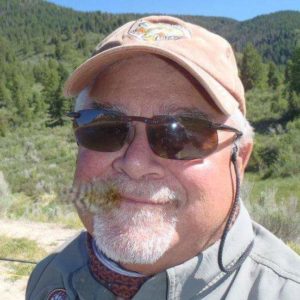 Our campers have gone on into careers in science, law, engineering and other pursuits. Because I have stayed in touch with many of them over the years, I know that our graduates not only continue to enjoy fly fishing, they maintain their interest in river conservation and many participate in Trout Unlimited projects and in TU chapter activities. One young man has started a TU chapter at his university and has thus involved many other young people in TU conservation projects and fly fishing. One of our campers returned several times as a youth counselor; she’s now a full-fledged adult volunteer member of our staff. Another was on the USA National Youth Fly Fishing Team that won a world championship. This program works.I’ve been involved in youth programs with my local TU chapter, St Vrain Anglers, and with CTU’s Youth River Conservation and Fly Fishing Camp; this will be my ninth year as a counselor at the CTU Camp. In that time I’ve seen nearly 200 teens from all over Colorado come through the program. They’ve ranged from hip Denver kids to dyed-in-the-wool ranch and farm kids and everything in between. One thing they have had in common is a love of being outdoors, learning something about the environment, and a desire to protect it.
Our campers have gone on into careers in science, law, engineering and other pursuits. Because I have stayed in touch with many of them over the years, I know that our graduates not only continue to enjoy fly fishing, they maintain their interest in river conservation and many participate in Trout Unlimited projects and in TU chapter activities. One young man has started a TU chapter at his university and has thus involved many other young people in TU conservation projects and fly fishing. One of our campers returned several times as a youth counselor; she’s now a full-fledged adult volunteer member of our staff. Another was on the USA National Youth Fly Fishing Team that won a world championship. This program works.I’ve been involved in youth programs with my local TU chapter, St Vrain Anglers, and with CTU’s Youth River Conservation and Fly Fishing Camp; this will be my ninth year as a counselor at the CTU Camp. In that time I’ve seen nearly 200 teens from all over Colorado come through the program. They’ve ranged from hip Denver kids to dyed-in-the-wool ranch and farm kids and everything in between. One thing they have had in common is a love of being outdoors, learning something about the environment, and a desire to protect it.
Using fly fishing, a passion shared by everyone involved in the program, as a vehicle for teaching young men and women about the environment while in that environment really drives home the lessons they learn. It’s one thing to talk about aquatic macroinvertebrates, it’s quite another to capture them and examine them close up, and tie a fly that represents that insect and catch a fish with it. Learning about watersheds while standing in one, looking around to see how water flows down mountainsides, gathering into rivulets, becoming creeks, then rivers, can’t be replaced by looking at a topo map. Hearing a presentation by a local oilman about his efforts to protect the land and water while providing the energy we need makes a dry headline about fracking come to life. Learning that water doesn’t belong to everybody, but is governed by complex laws is an eye opener. These experiences prepare our campers for a greater awareness of the fragility of the world around us and the need to protect it, especially the watersheds that are so critical to trout and salmon.
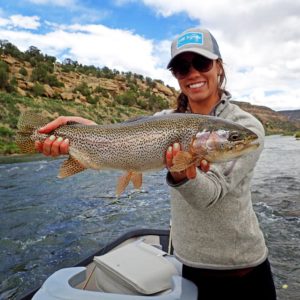






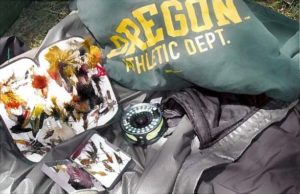 I was a TU member before I ever belonged to a chapter. I supported TU because I liked it's message and I liked to fish, and I'd like to think of this sport and this pleasure being here for those that come next.
I was a TU member before I ever belonged to a chapter. I supported TU because I liked it's message and I liked to fish, and I'd like to think of this sport and this pleasure being here for those that come next.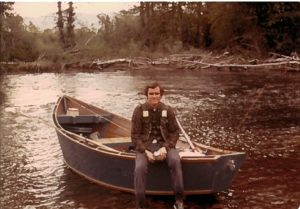
 The CTU camp that I was lucky to attend in my freshman summer going into high school was one of the best experiences that I have ever had. I really do think it was one of my best fishing experiences ever. I was able to share a common interest with everyone that I was fortunate to meet. I was able to share not only the amazing hobby of fishing but to help out and better the life of not only me but the fish and future fishermen and women. While I was there I shared many experiences and moments that I will treasure through my whole life. One moment that I remember clear as day was the chance to be one with the water and look to what fish refer to as, food. I was able to clearly see and extract many bugs in a stream that was abundant of fish. It was also a very humbling experience because I was able to see how we as a youth group could really impact the future of fishing and to ensure the maintenance to keep our fishing in Colorado going strong. I am very grateful of what I was able to learn in the short amount of time I was there. I would have been okay if it was all summer but I still am very grateful for the chance to attend an amazing camp full of amazing people.
The CTU camp that I was lucky to attend in my freshman summer going into high school was one of the best experiences that I have ever had. I really do think it was one of my best fishing experiences ever. I was able to share a common interest with everyone that I was fortunate to meet. I was able to share not only the amazing hobby of fishing but to help out and better the life of not only me but the fish and future fishermen and women. While I was there I shared many experiences and moments that I will treasure through my whole life. One moment that I remember clear as day was the chance to be one with the water and look to what fish refer to as, food. I was able to clearly see and extract many bugs in a stream that was abundant of fish. It was also a very humbling experience because I was able to see how we as a youth group could really impact the future of fishing and to ensure the maintenance to keep our fishing in Colorado going strong. I am very grateful of what I was able to learn in the short amount of time I was there. I would have been okay if it was all summer but I still am very grateful for the chance to attend an amazing camp full of amazing people. Many of the leaders and volunteers involved in the CTU Youth Camp have originated from the University of Colorado fly fishing club. The CU Fly Fishing Club is a wonderful fly fishing group that is part of the University of Colorado club sports program. The club focuses on teaching the art of fly fishing, fly casting and fly tying to all experience levels and is a place where anglers can share fishing information and form life long friendships.
Many of the leaders and volunteers involved in the CTU Youth Camp have originated from the University of Colorado fly fishing club. The CU Fly Fishing Club is a wonderful fly fishing group that is part of the University of Colorado club sports program. The club focuses on teaching the art of fly fishing, fly casting and fly tying to all experience levels and is a place where anglers can share fishing information and form life long friendships. Our campers have gone on into careers in science, law, engineering and other pursuits. Because I have stayed in touch with many of them over the years, I know that our graduates not only continue to enjoy fly fishing, they maintain their interest in river conservation and many participate in Trout Unlimited projects and in TU chapter activities. One young man has started a TU chapter at his university and has thus involved many other young people in TU conservation projects and fly fishing. One of our campers returned several times as a youth counselor; she’s now a full-fledged adult volunteer member of our staff. Another was on the USA National Youth Fly Fishing Team that won a world championship. This program works.I’ve been involved in youth programs with my local TU chapter, St Vrain Anglers, and with CTU’s Youth River Conservation and Fly Fishing Camp; this will be my ninth year as a counselor at the CTU Camp. In that time I’ve seen nearly 200 teens from all over Colorado come through the program. They’ve ranged from hip Denver kids to dyed-in-the-wool ranch and farm kids and everything in between. One thing they have had in common is a love of being outdoors, learning something about the environment, and a desire to protect it.
Our campers have gone on into careers in science, law, engineering and other pursuits. Because I have stayed in touch with many of them over the years, I know that our graduates not only continue to enjoy fly fishing, they maintain their interest in river conservation and many participate in Trout Unlimited projects and in TU chapter activities. One young man has started a TU chapter at his university and has thus involved many other young people in TU conservation projects and fly fishing. One of our campers returned several times as a youth counselor; she’s now a full-fledged adult volunteer member of our staff. Another was on the USA National Youth Fly Fishing Team that won a world championship. This program works.I’ve been involved in youth programs with my local TU chapter, St Vrain Anglers, and with CTU’s Youth River Conservation and Fly Fishing Camp; this will be my ninth year as a counselor at the CTU Camp. In that time I’ve seen nearly 200 teens from all over Colorado come through the program. They’ve ranged from hip Denver kids to dyed-in-the-wool ranch and farm kids and everything in between. One thing they have had in common is a love of being outdoors, learning something about the environment, and a desire to protect it.



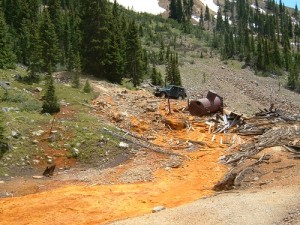 TU is currently working on three other NPS funded projects on the Illinois Gulch (Breckenridge), Evans Gulch (Leadville), and Leavenworth Creek (Georgetown) watersheds. The Environmental Protection Agency describes
TU is currently working on three other NPS funded projects on the Illinois Gulch (Breckenridge), Evans Gulch (Leadville), and Leavenworth Creek (Georgetown) watersheds. The Environmental Protection Agency describes 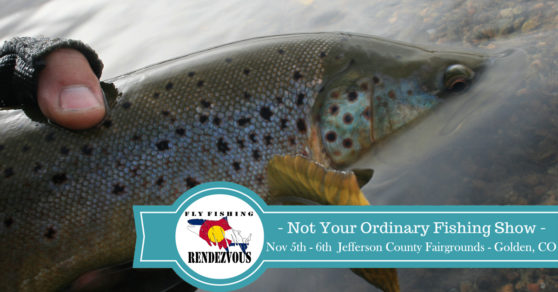
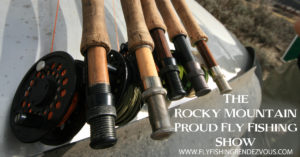
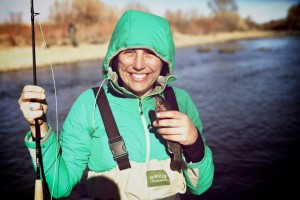 “It’s the consummate riddle that’s never solved, when you’re on the river and fishing,” said Barclay, a real estate agent with Slifer, Smith and Frampton who’s been moonlighting as a guide with Blue Quill Angler for more than a decade. “And it takes you to beautiful places. Just don’t wait for it to show up on your bucket list — get out there now.”
“It’s the consummate riddle that’s never solved, when you’re on the river and fishing,” said Barclay, a real estate agent with Slifer, Smith and Frampton who’s been moonlighting as a guide with Blue Quill Angler for more than a decade. “And it takes you to beautiful places. Just don’t wait for it to show up on your bucket list — get out there now.”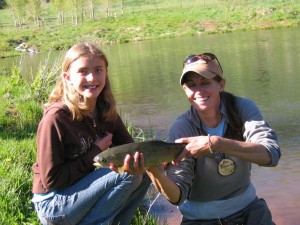 “A guide friend told me: ‘Have a river that you fish and know intimately, all times of the year and in all conditions,’” said Barclay, who travels north to the Bighorn at least four times per year. “So I followed what he said, and now I fish it in winter and summer, all year long, from low flows to high flows.”
“A guide friend told me: ‘Have a river that you fish and know intimately, all times of the year and in all conditions,’” said Barclay, who travels north to the Bighorn at least four times per year. “So I followed what he said, and now I fish it in winter and summer, all year long, from low flows to high flows.”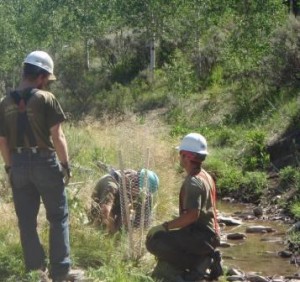
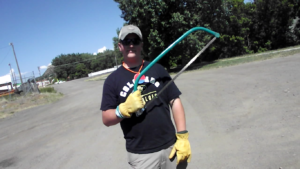 At the
At the 
